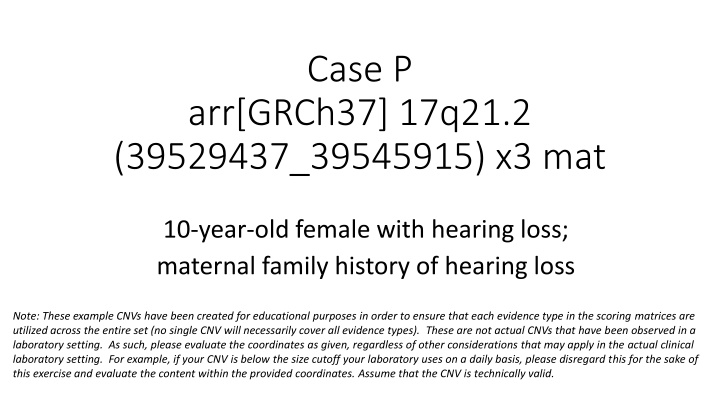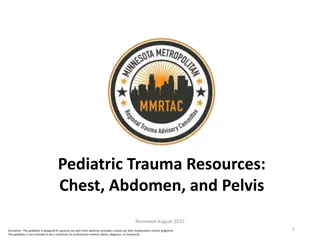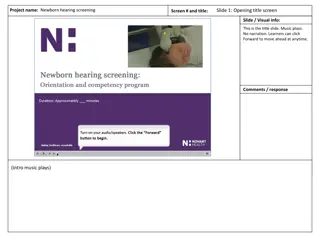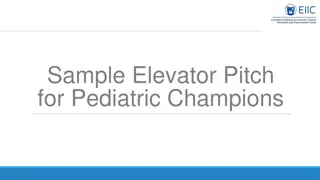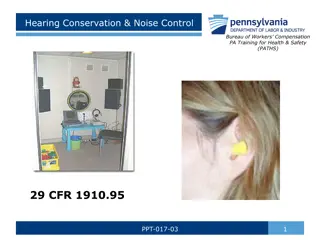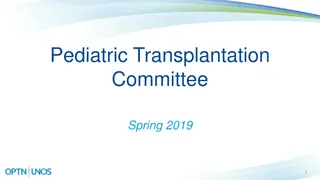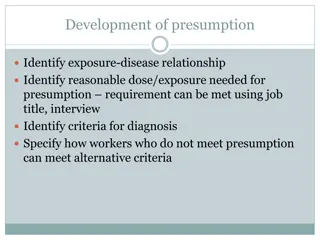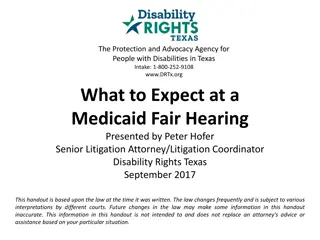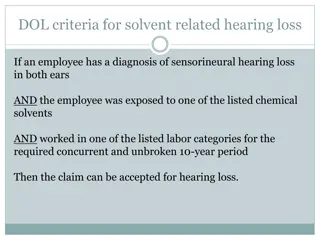Pediatric Hearing Loss Evaluation
This case involves a 10-year-old female with hearing loss and a maternal family history of the same. A maternally inherited duplication in the 17q21.2 region is identified. The duplication includes the KRT34 gene, a hair keratin gene. Various assessments and evaluations are conducted to understand the clinical implications of this genetic variant. The presence of the duplication and its association with human disease, particularly primary ciliary dyskinesia, are explored through genomic content analysis and literature review.
Download Presentation

Please find below an Image/Link to download the presentation.
The content on the website is provided AS IS for your information and personal use only. It may not be sold, licensed, or shared on other websites without obtaining consent from the author.If you encounter any issues during the download, it is possible that the publisher has removed the file from their server.
You are allowed to download the files provided on this website for personal or commercial use, subject to the condition that they are used lawfully. All files are the property of their respective owners.
The content on the website is provided AS IS for your information and personal use only. It may not be sold, licensed, or shared on other websites without obtaining consent from the author.
E N D
Presentation Transcript
Case P arr[GRCh37] 17q21.2 (39529437_39545915) x3 mat 10-year-old female with hearing loss; maternal family history of hearing loss Note: These example CNVs have been created for educational purposes in order to ensure that each evidence type in the scoring matrices are utilized across the entire set (no single CNV will necessarily cover all evidence types). These are not actual CNVs that have been observed in a laboratory setting. As such, please evaluate the coordinates as given, regardless of other considerations that may apply in the actual clinical laboratory setting. For example, if your CNV is below the size cutoff your laboratory uses on a daily basis, please disregard this for the sake of this exercise and evaluate the content within the provided coordinates. Assume that the CNV is technically valid.
Clinical Information arr[GRCh37] 17q21.2(39529437_39545915) x3 mat 10-year-old female with hearing loss Estimated prevalence of AR hearing loss: ~1/200 Estimated prevalence of AD hearing loss (based on NHANES data in individuals 0-49): ~1/30 Maternal family history of hearing loss Variant is maternally inherited Use the GAIN scoring metric Oza et al. 2018, PMID: 30311386
Section 1: Initial Assessment of Genomic Content Case P Gene Involved Would apply category 1A (contains protein-coding or other known functionally important elements), as this duplication includes a protein-coding gene. 0 points; continue evaluation Total: 0 points
Section 2: Overlap with Established TS, HI, or Benign Genes/Genomic Regions Case P ClinGen Curated Track = EMPTY CNV P does not overlap with any current ClinGen curated genes/regions. Total: 0 points
Section 3: Evaluation of Gene Number CNV P contains only a single protein-coding gene, KRT34. Use Category 3A, 0 points Total: 0 points
Section 4: Detailed Evaluation of Genomic Content As of July 2020, KRT34, a hair keratin, has not been associated with human disease per OMIM Basic literature search does not reveal any convincing evidence There is a single report of a child with a clinical diagnosis of primary ciliary dyskinesia with a duplication involving KRT34, as well as other CNVs and other variants identified on exome sequencing (PMID:31835165). Check population data for any additional information.
Approximate length of CNV P KRT34 While smaller than CNV P, this duplication does include all of KRT34. No other genes are involved in CNV P. What is the frequency of this variant?
The variant passed quality filters. A sufficient number of alleles has been studied (>2000 alleles from a continental population). While this variant has been observed within most of the studied populations, they are the most frequent in Africans, with an allele frequency of 8.8%. Hearing loss, however, is a relatively frequent condition how does this particular allele frequency align with estimates of disease prevalence? Total: -1 points
ClinGen has a variant curation expert panel (VCEP) focused on Hearing Loss. The group specified the ACMG/AMP sequence variant interpretation criteria, including those involving population data frequencies, for both AD and AR hearing loss. As above, variants at greater than 0.005 for AR hearing loss or 0.001 for AD hearing loss can be classified as Benign using the BA1 criteria. Our variant is more frequent than both of those cutoffs. Apply Category 4O, -1 points. Oza et al. 2018, PMID: 30311386
Similar high frequency duplications are observed in the DGV Gold Standard Dataset Case P DGV Gold Standard Total: -1 points
Section 5: Evaluation of Inheritance Pattern/Family History for Patient Being Studied Our patient is a 10-year-old female with hearing loss. Regardless of inheritance information, similar duplications are observed frequently in the general population, at frequencies too high to be a plausible cause for hearing loss. But the variant is maternally inherited! And she has a maternal family history of hearing loss! This does not change the evidence discussed above, or our assessment of the variant. Similar variants are demonstrated to be common in the general population, and children have a 50% chance of inheriting any variant present in their parents. This variant is most likely a red herring. No positive points should be awarded for inheritance from a family member with consistent phenotype. Total: -1 points
Conclusion Classification: Benign Similar duplications are observed in the general population at frequencies too high to be a plausible cause of hearing loss. Consider additional testing to investigate other potential causes for hearing loss in this individual.
